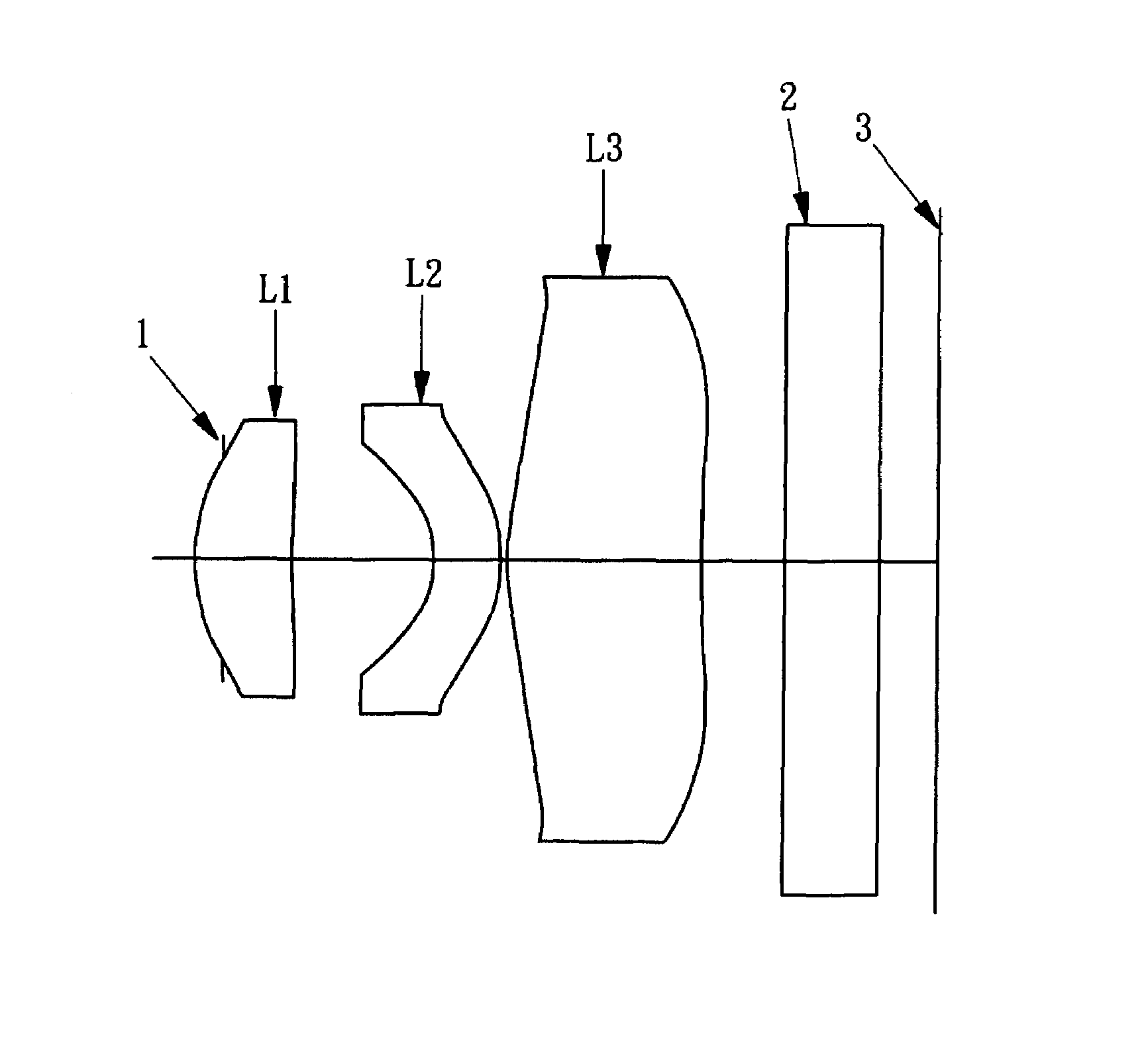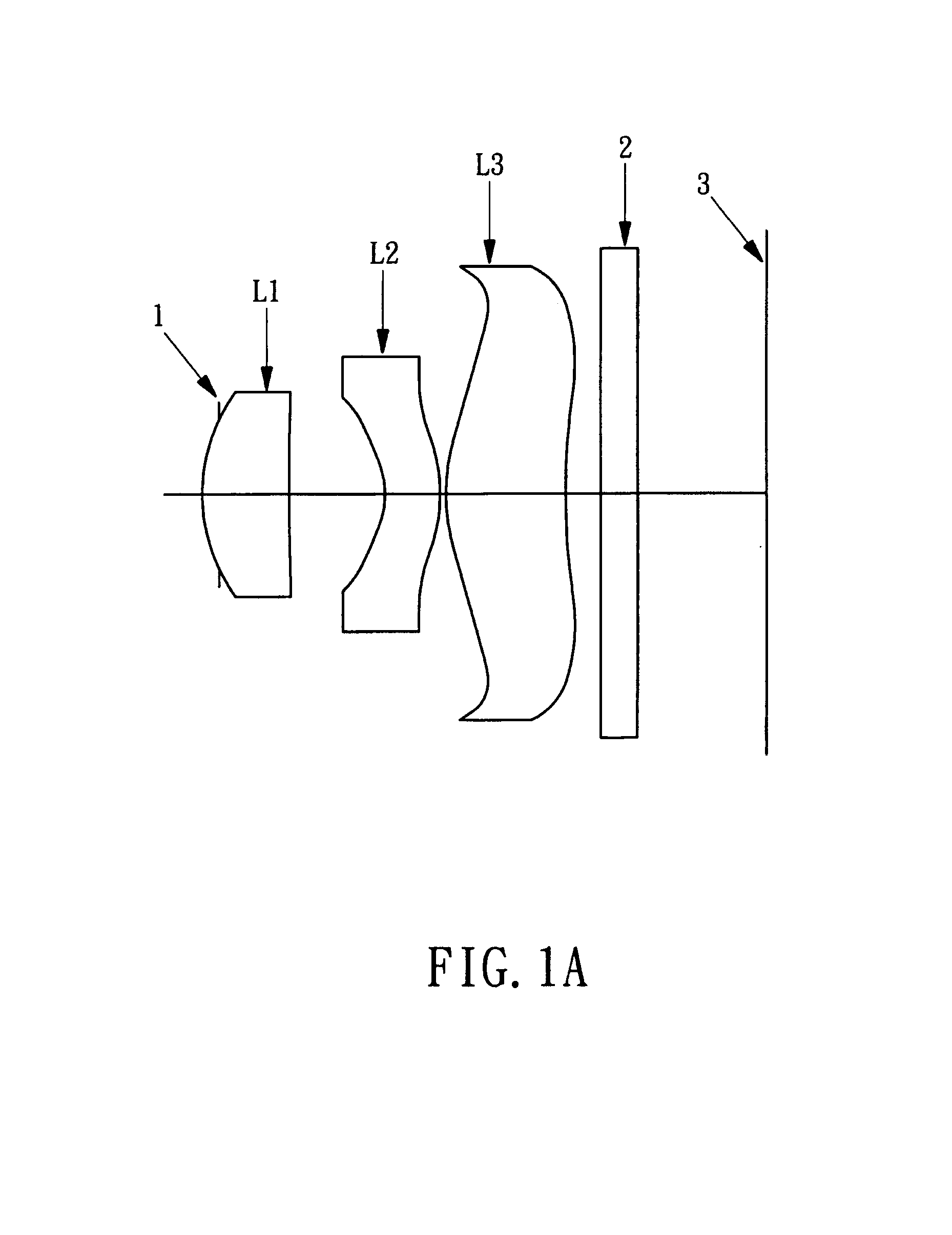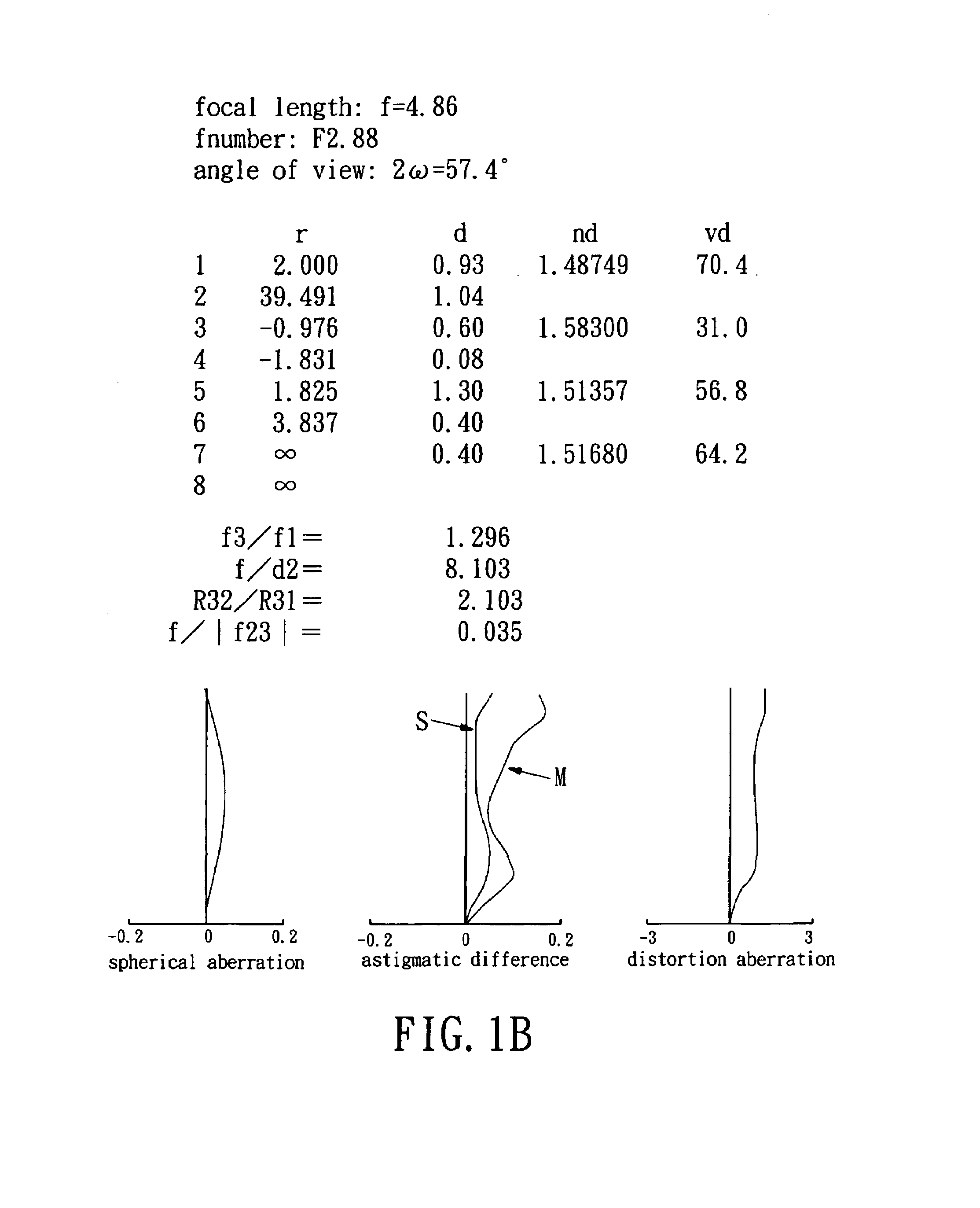Lens assembly for an image sensor
a technology for image sensors and lens assemblies, which is applied in the field of lens assemblies for image sensors, can solve the problems of excessive power of the first lens, excessive increase in the sensitivity of the whole image lens assembly, and consequently affect the function and effect of the lens assembly, so as to reduce improve the ability of restraining power, and improve the sensitivity of decentration and the aberration correction effect of the whole lens assembly in accordance with the present invention
- Summary
- Abstract
- Description
- Claims
- Application Information
AI Technical Summary
Benefits of technology
Problems solved by technology
Method used
Image
Examples
Embodiment Construction
[0040]With reference to the respective figures, a lens assembly for an image sensor comprises an aperture 1, a first lens L1, a second lens L2, a third lens L3, a parallel flat glass 2 and an image plane 3 (the aperture 1 and the image plane 3 are indicated by the lines), which are arranged sequentially from the object side.
[0041]The aperture 1 is disposed nearest to the object side.
[0042]The first lens L1 can be a planoconvex lens or a positive meniscus lens whose convex surface faces the object side. The first lens L1 as shown in FIGS. 7–12 is a planoconvex lens L1, and the first lens L1 shown in the rest figures is a meniscus lens. The first lens L1 according to the present invention is more capable of restraining the increased power than the conventional invention.
[0043]The second lens L2 is a negative meniscus lens with a convex surface facing the image side and at least has an aspherical surface. The second lens L2 as shown in FIGS. 1–12 has two aspherical surfaces.
[0044]The t...
PUM
 Login to View More
Login to View More Abstract
Description
Claims
Application Information
 Login to View More
Login to View More - R&D
- Intellectual Property
- Life Sciences
- Materials
- Tech Scout
- Unparalleled Data Quality
- Higher Quality Content
- 60% Fewer Hallucinations
Browse by: Latest US Patents, China's latest patents, Technical Efficacy Thesaurus, Application Domain, Technology Topic, Popular Technical Reports.
© 2025 PatSnap. All rights reserved.Legal|Privacy policy|Modern Slavery Act Transparency Statement|Sitemap|About US| Contact US: help@patsnap.com



